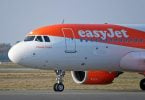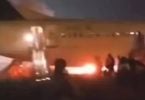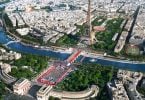The Transportation Security Administration (TSA) is well-prepared for the surge in passenger volumes expected at airport security checkpoints nationwide during the upcoming summer travel season, which spans from Memorial Day weekend to Labor Day. TSA is projecting Friday, May 24, to be the busiest travel day of the Memorial Day weekend, with nearly three million passengers anticipated. Between May 23 and May 29, the agency is estimating that over 18 million passengers and crew will be screened, marking a 6.4% increase in checkpoint volume compared to the same period in 2023.
TSA Administrator David Pekoske stated, “In close collaboration with airport, airline, and travel partners, we are fully equipped to manage the heightened travel volumes this summer.” He added, “We are also implementing cutting-edge checkpoint technology to enhance security measures, improve efficiency, and elevate the passenger experience. Our recruitment and retention rates are currently at their peak.”
TSA is actively modernizing airport security checkpoints nationwide, focusing on advanced detection techniques to bolster the security of the aviation system. Throughout the summer, airline passengers can anticipate encountering the latest checkpoint technologies and are advised to follow several essential travel tips.
These recommendations include:
1. Stay informed about the latest checkpoint technology and adhere to TSA guidelines. The Credential Authentication Technology (CAT-2) used by TSA is an upgraded version of CAT, which verifies the authenticity of a passenger’s identification credentials, flight details, and pre-screening status, now with an added camera feature. Passengers can choose to have a real-time photo taken for identity verification using their TSA-acceptable ID. The facial recognition technology employed by TSA ensures that the person at the checkpoint matches the photo on their ID. Keep your boarding pass secure, as photos are not stored after a successful ID match, except in limited testing scenarios. Passengers who prefer not to have their photo taken can request a manual ID check from a Transportation Security Officer without any repercussions. For more details on TSA’s use of facial recognition technology, refer to TSA’s Privacy Impact Assessments, Fact Sheet, and biometrics technology webpages.
Several airports have integrated Computed Tomography (CT) units, which enhance scanning and threat detection capabilities for carry-on bags. TSOs can now view a 3D image of passengers’ bags using CT units, reducing the need for physical searches. Passengers screened in lanes with CT units are not required to remove 3-1-1 liquids or laptops, but all carry-on items must be placed in a bin for screening. Remember to bring only one carry-on bag and one personal item through security screening.
TSA has also rolled out 2,050 CAT units to 223 airports, with 238 CAT-2 units in 84 airports nationwide. Furthermore, the Transportation Security Administration (TSA) has successfully implemented over 820 CT units across a network of 240 airports throughout the country. It is crucial for passengers to adhere to the instructions provided by Transportation Security Officers (TSOs) as screening procedures may differ based on the airport’s technological capabilities and the prevailing threat landscape.
2. It is important to be aware of the regulations regarding firearms when traveling. Firearms are strictly prohibited at security checkpoints, within the secure area of an airport, and in the passenger cabin of an aircraft, regardless of whether a passenger possesses a concealed carry permit or is in a constitutional carry jurisdiction. However, passengers are allowed to travel with firearms as long as they adhere to certain guidelines. The firearm must be securely packed in the passenger’s checked baggage, unloaded, and locked in a hard-sided case. Additionally, it is mandatory to declare the firearm to the airline during the check-in process at the ticket counter.
It is crucial to note that the Transportation Security Administration (TSA) does not confiscate firearms. If a passenger mistakenly brings a firearm to the security checkpoint, the TSA officer will promptly contact local law enforcement to ensure the safe unloading and possession of the firearm. Depending on local law, the passenger may face arrest or citation by law enforcement. In addition, the TSA has the authority to impose civil penalties of up to nearly $15,000. For a first offense of bringing a firearm to a security checkpoint, passengers will also lose their TSA PreCheck eligibility for a period of five years. Subsequent violations will result in permanent disqualification from the program and further civil penalties.
3. It is advisable to prepare an empty bag, familiarize yourself with the necessary information before your trip, and keep in mind the 3-1-1 rule. By starting your packing process with an empty bag, you decrease the chances of being stopped at the security checkpoint due to prohibited items. Prior to packing, it is recommended to consult TSA’s “What Can I Bring?” tool to ensure you are aware of any prohibited items.
If you are planning a trip to the beach, you might be wondering how to pack your sunscreen. Remember that any liquids, sunscreen containers, and alcohol exceeding 3.4 ounces should be packed in your checked bag. However, liquids, aerosols, gels, creams, and pastes that are 3.4 ounces or less are allowed in your carry-on bag, as long as they are placed in a quart-sized bag. Each passenger is limited to one quart-sized bag of liquids, aerosols, gels, creams, and pastes.
4. It is important to have a REAL ID or another valid form of identification. Adult passengers who are 18 years old and above must display legitimate ID credentials at the airport security checkpoint to be able to travel.
Starting from May 7, 2025, if you are planning to use your state-issued ID or driver’s license for air travel within the United States, ensure that you possess a REAL ID or another acceptable form of identification. If you are unsure whether you have a REAL ID, please consult your state’s department of motor vehicles.
5. For TSA PreCheck members, it is crucial to have your Known Traveler Number (KTN) correctly listed in your reservation. With a significant number of nearly 20 million TSA PreCheck members, it is important for airline reservations to include the passenger’s accurate KTN, full name, and date of birth to ensure a seamless travel experience. Passengers who frequently fly with different airlines should regularly update their KTN in each of their airline profiles before every trip. TSA PreCheck passengers are considered low-risk travelers and are not required to remove shoes, belts, 3-1-1 liquids, food, laptops, and light jackets at the TSA checkpoint. TSA aims to keep wait times under 10 minutes for TSA PreCheck lanes and under 30 minutes for standard lanes.
6. Ensure you allocate sufficient time for yourself. With the summer travel season being particularly busy, it is crucial to plan ahead. Allow yourself ample time to find parking or return a rental car, take a shuttle to the airport if necessary, check in with your airline, drop off your bags, and prepare for the security screening. Streamline the process by emptying your pockets and stowing items in your carry-on bag, rather than placing them directly in the bins at the security checkpoint.
7. Show respect towards TSA and other frontline airport and airline staff. Acts of violence and disruptive behavior within the transportation system are unacceptable and lead to significant delays at security checkpoints. Transportation Security Officers (TSOs), in collaboration with other frontline airport and airline personnel and local law enforcement, are dedicated to ensuring safe and secure travel for all passengers. Any form of assault on a TSA employee is considered a federal offense and will result in penalties and potential arrest.
8. For inquiries, feedback, grievances, or aid, get in touch with TSA. Reach out to TSA by texting 275-872 (“AskTSA”) on any mobile device or through social media by messaging @AskTSA on X or Facebook Messenger. A virtual assistant is on hand around the clock to address frequently asked questions, while AskTSA personnel are available 365 days a year from 8 a.m. to 6 p.m. ET for more complex queries. Travelers can also contact the TSA Contact Center at 866-289-9673. An automated service is accessible 24/7. Passengers requiring extra support during security screening can ask for a TSA Passenger Support Specialist (PSS). A PSS is a TSO who has undergone specialized training, including how to effectively aid and communicate with individuals with disabilities, medical conditions, or those in need of additional screening assistance.
(eTN): TSA Expects Busiest Summer Travel Season Ever This Year | re-post license | post content























